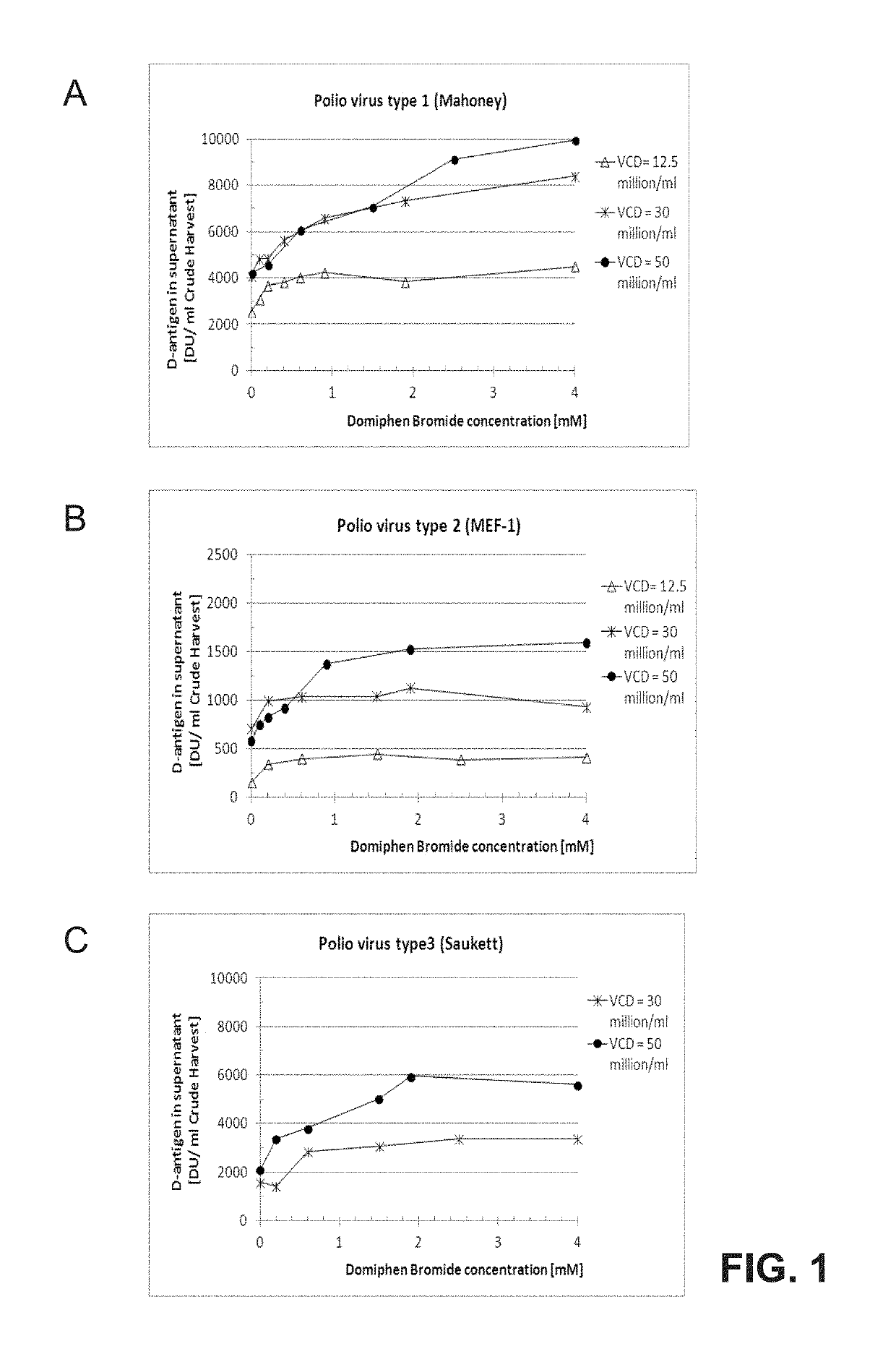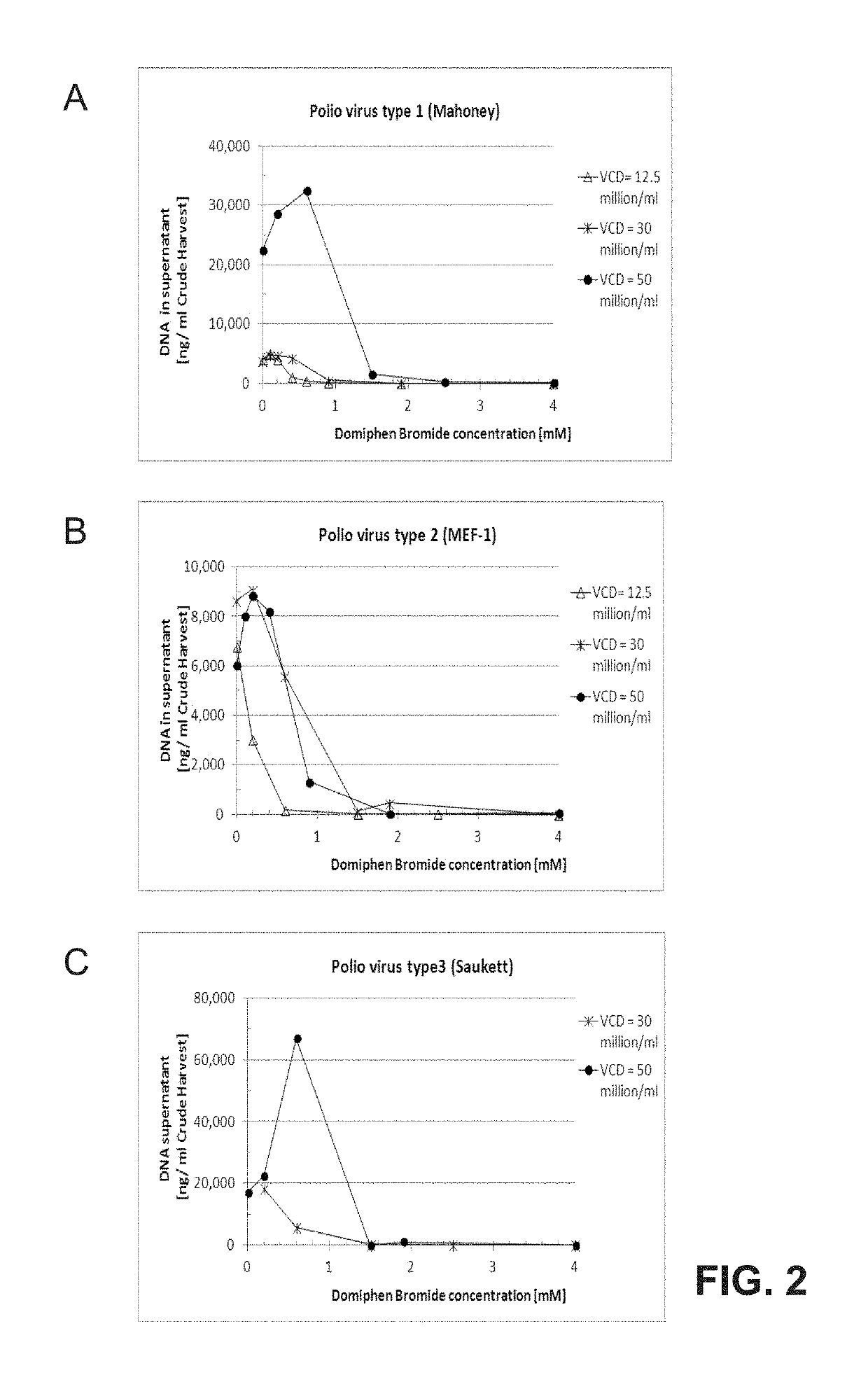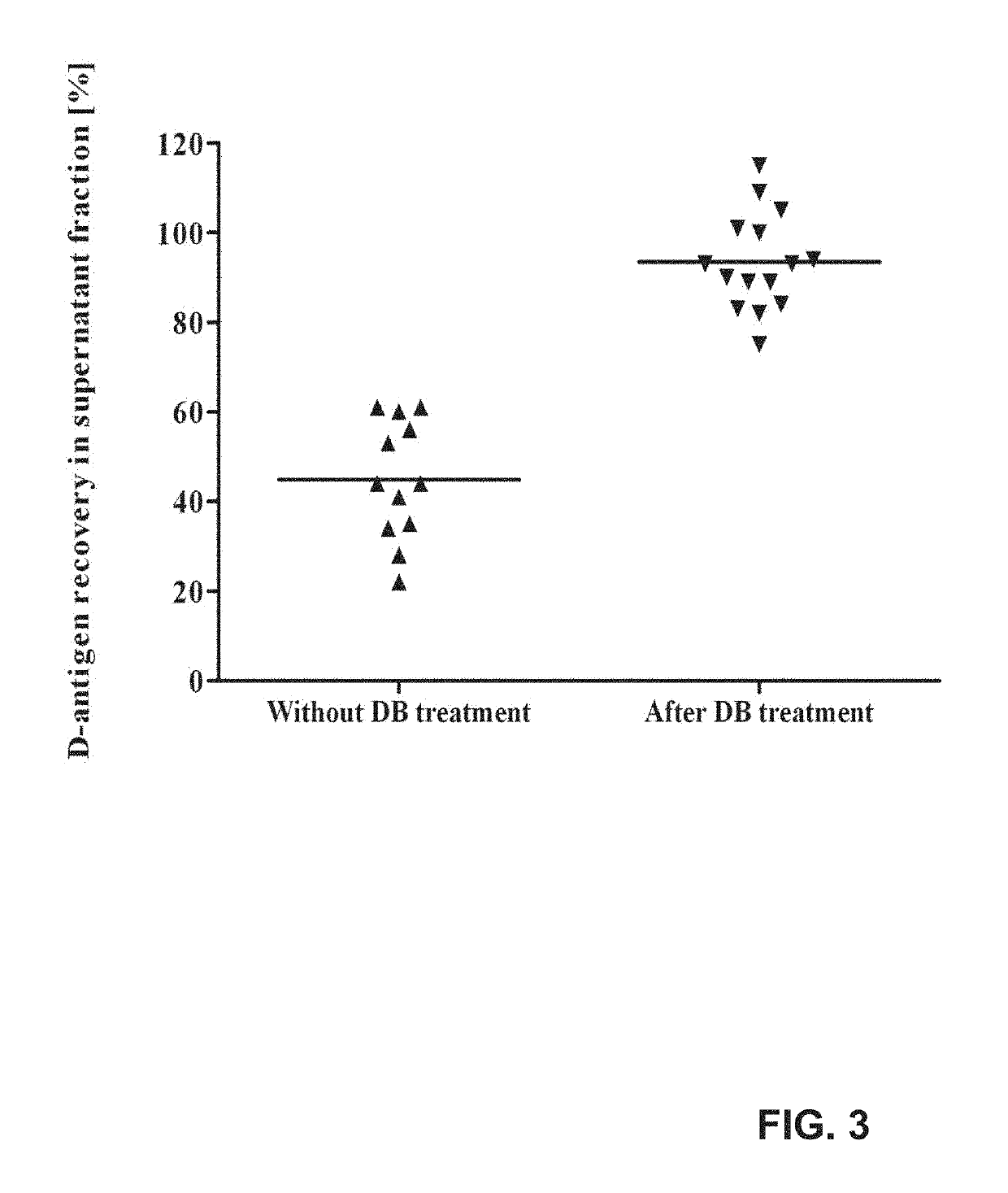Process for the purification of poliovirus from cell cultures
a cell culture and purification technology, applied in the field of biotechnology and virus production, can solve the problems of high cost, paralytic poliomyelitis, and high contagiousness of poliomyelitis, and achieve the effect of enhancing the release of poliovirus
- Summary
- Abstract
- Description
- Claims
- Application Information
AI Technical Summary
Benefits of technology
Problems solved by technology
Method used
Image
Examples
example 1
Increased Poliovirus Purification Yields from Poliovirus-containing Crude Cell Culture Harvest by Addition of a Cationic Detergent
[0102]Cells from the PER.C6® cell line were grown in a serum-free culture medium in a 10 L bioreactor operated in perfusion mode to a cell density of approximately 50×106 viable cells / ml (vc / ml). Prior to infection with poliovirus type 1 (Mahoney), type 2 (MEF-1) or type 3 (Saukett), the culture was diluted with fresh culture medium to viable cell density in the range between 12.5×106 and 50×106 vc / mL. The batch infection process took place in 10 L bioreactors at 35° C. at a multiplicity of infection of 1. At the time of harvest, 20-24 hours post-infection, a 50 ml sample was taken, which was subsequently distributed in 11 aliquots of 4 mL.
[0103]In order to determine the effect of a detergent on the poliovirus-containing cell culture harvests, a titration experiment was performed with Domiphen bromide (DB). A discrete amount of DB stock solution was added...
example 2
Efficacy of Detergent Treatment on Poliovirus Release From VERO and MRC-5 Crude Cell Culture Harvests
[0108]Treatment of a Crude Poliovirus Harvest from an Adherent VERO Cell Culture
[0109]Vero cells were pre-cultured in T-175 flasks and scaled up to inoculate 1 spinnerflasks Cytodex 3, at 30×103 cells / cm2 in VERO spinner medium (MEM+10% FBS+6 mM Glutamine+4.6 g / L Glucose) and 5 g / L microcarriers Cytodex 3. The cells were incubated at 37° C., 5% CO2 and stirred at 60 rpm for the first 24 hours and at 90 rpm during the following days. At day 3 post-seeding (on microcarriers), the cells were washed with pre-warmed PBS and a medium change was performed with infection medium (MEM+4 mM Glutamine). The replenished cell culture was distributed over 50 ml tubespins containing 20 ml cell culture seeded at 1×106 cells / mL. The tubespins were infected for each of the three virus strains (Mahoney, MEF-1, Saukett) with an MOI of 1. Infection was performed at 35° C., 170 rpm, 5% CO2 and the virus wa...
example 3
Impact of Detergent Treatment on Poliovirus Release and DNA Clearance in a Bioreactor Prior to Cell Clarification
[0115]PER.C6® cells were grown in a serum-free culture medium in a 10 L glass bioreactor operated in perfusion mode to a cell density of approximately 50×106 vc / ml. Prior to infection with poliovirus type 1 (Mahoney), type 2 (MEF-1) or type 3 (Saukett), the culture was diluted with fresh culture medium to a viable cell density of 12.5×106 vc / ml. The batch infection process took place in 10 L bioreactors at 35° C. at a multiplicity of infection of 1. At the time of harvest, 20-24 hours post-infection, a Domiphen Bromide (DB) stock solution was added in 30 minutes while stirring to reach a final DB concentration of 2.2 mM DB. After detergent addition, the bioreactor was left to incubate for one hour at 35° C., while constantly stirring.
[0116]Samples of the crude cell harvest (without DB treatment and post-DB treatment) were centrifuged (3000 g, 5 minutes) to sediment the ce...
PUM
| Property | Measurement | Unit |
|---|---|---|
| pore sizes | aaaaa | aaaaa |
| pore sizes | aaaaa | aaaaa |
| conductivity | aaaaa | aaaaa |
Abstract
Description
Claims
Application Information
 Login to View More
Login to View More - R&D
- Intellectual Property
- Life Sciences
- Materials
- Tech Scout
- Unparalleled Data Quality
- Higher Quality Content
- 60% Fewer Hallucinations
Browse by: Latest US Patents, China's latest patents, Technical Efficacy Thesaurus, Application Domain, Technology Topic, Popular Technical Reports.
© 2025 PatSnap. All rights reserved.Legal|Privacy policy|Modern Slavery Act Transparency Statement|Sitemap|About US| Contact US: help@patsnap.com



